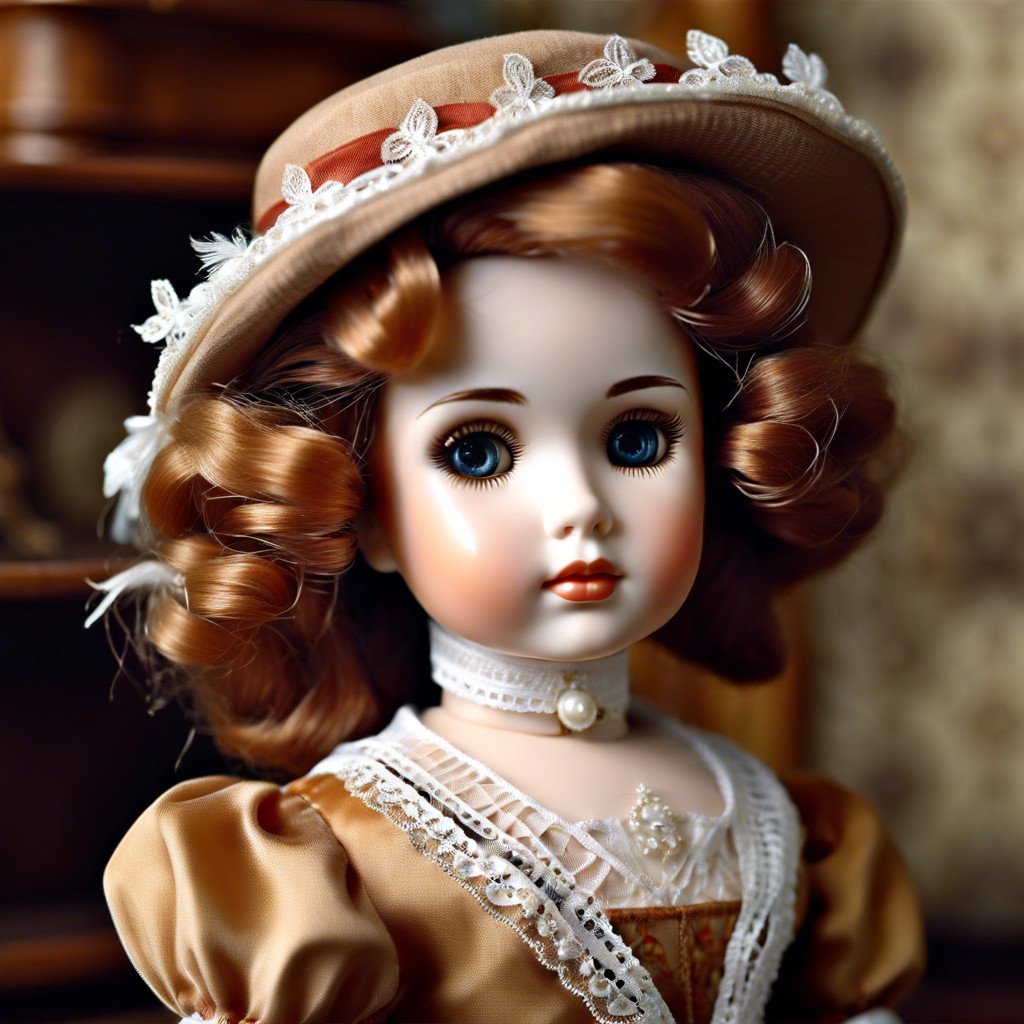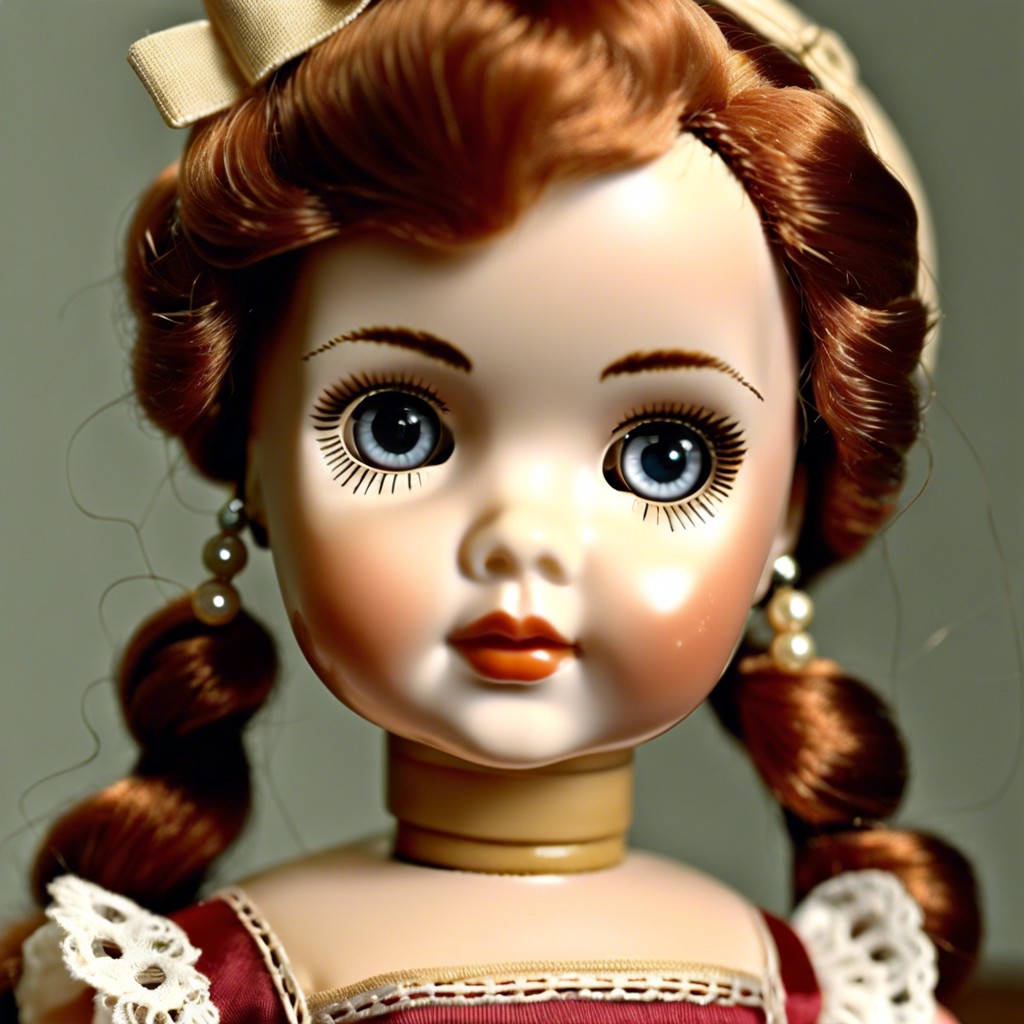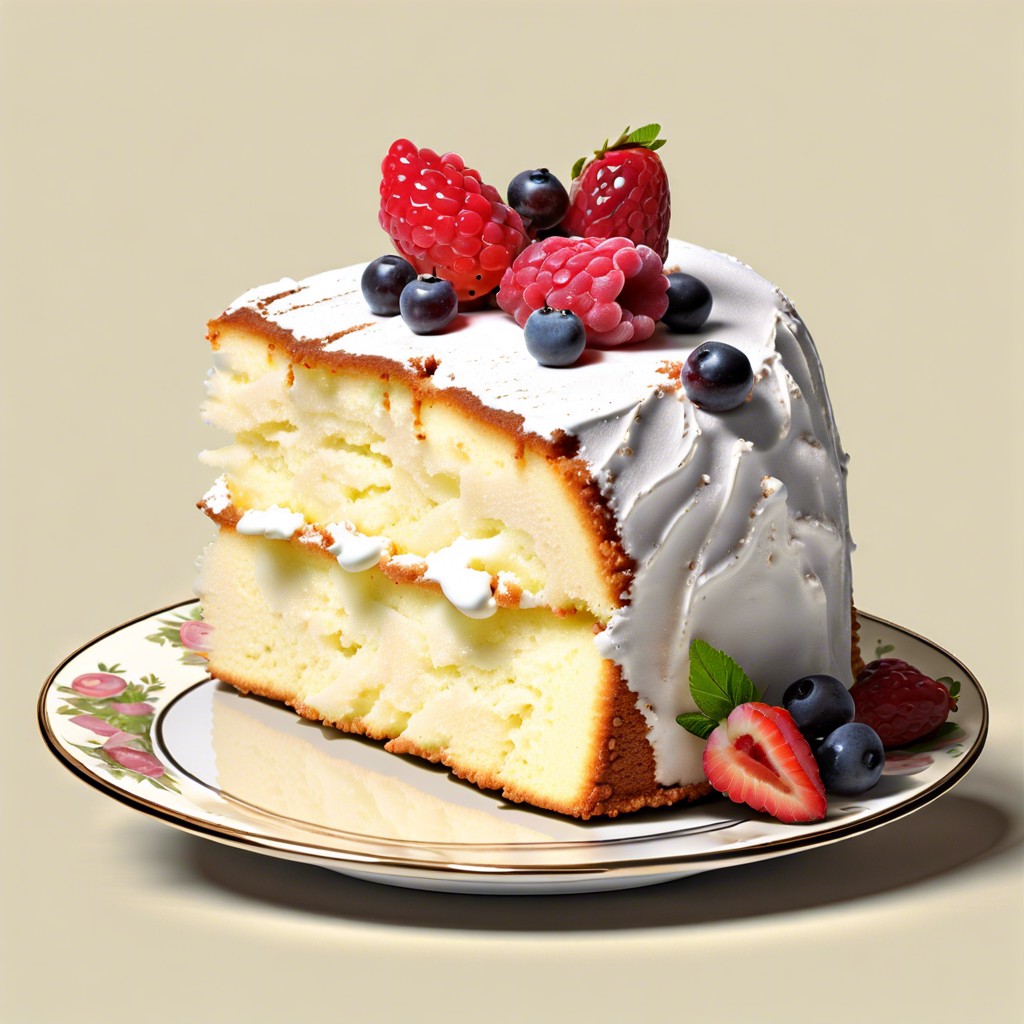Last updated on
This article provides insights into the history, types, and value of vintage dolls for collectors and enthusiasts.
Key takeaways:
- Vintage dolls provide insights into the past.
- Prominent manufacturers include Mattel and Madame Alexander.
- Tips for identifying genuine vintage dolls.
- Factors that determine the value of vintage dolls.
- Proper display and care to protect their value.
Historical Context of Vintage Dolls

Vintage dolls are not just playthings; they are a window into the past. These dolls have evolved from simple wooden peg styles to elaborate bisque and porcelain figures, reflecting the cultural, technological, and artistic trends of their times. Originating as early as the 16th century, vintage dolls became especially popular in the 19th century as doll-making technology improved and the middle class expanded, paving the path for toys to be marketed as children’s playthings.
Different eras brought distinct styles; for example, the Victorian era saw the rise of wax dolls with intricate clothing, mirroring the fashion of the period. The 20th century introduced composition dolls, using a mixture of materials like sawdust, glue, and resin, signifying industrial advancement. Collectors today prize dolls from specific periods for their historical and artistic value, examining features such as material, craftsmanship, and markings to assert authenticity and era.
Major Manufacturers and Brands

Several prominent companies have left a lasting mark on the field of vintage dolls. Among them, Mattel stands out, particularly for the Barbie doll introduced in 1959, which quickly became a cultural icon. American Character Doll Company, operational from the early 1900s to 1968, was known for Tressy, the doll with hair that could “grow.”
Madame Alexander, founded in 1923, earned acclaim with their beautifully crafted dolls, often themed after characters from literature and movies. They particularly shone with their “Alexander Dolls.”
Europe made notable contributions as well, especially with companies like Lenci from Italy, celebrated for their felt dolls that showcased intricate detailing and rich expressions. Germany’s Käthe Kruse produced handcrafted dolls that are highly prized for their unique artistic and emotional depth.
Collectors familiar with these brands can often gauge a doll’s vintage and potential value simply by recognizing their distinct characteristics and manufacturing details.
Identification Tips for Collectors

To distinguish genuine vintage dolls from reproductions, start by examining their materials. Earlier dolls often feature bisque, porcelain, or celluloid, which differentiates them from modern plastic varieties. Look closely at the markings; manufacturers like Madame Alexander and Barbie always marked their products, usually on the back of the neck or the lower back. These marks can include the company name, date of production, and sometimes the model name.
Another tip is to study the clothing and accessories for signs of aging and authentic vintage styles. Original outfits add to a doll’s value and authenticity. The stitching, fabric type, and even the style of clothing can tell you much about the period it represents.
Lastly, consult collector guides, join forums, and participate in discussions. Many experienced collectors are eager to share knowledge and insights on distinguishing characteristics of specific doll types and eras. With practice and a keen eye, you’ll become proficient at picking out the true gems.
Establishing the Value of Vintage Dolls

Determining the worth of vintage dolls hinges on several factors. First, consider the age and rarity. Older dolls, especially those discontinued or produced in limited quantities, typically fetch higher prices. Condition plays a crucial role; dolls in pristine or unopened boxes are valued significantly higher than those with wear or damage.
Manufacturer marks or signatures also influence value. These identifiers, often found on the back of the head, neck, or feet, can authenticate a doll and trace its historical lineage. Additionally, original clothing and accessories enhance a doll’s market appeal, adding to its collective value.
Collectible trends can fluctify, so staying updated with market trends is beneficial. Speaking with fellow collectors and attending doll auctions can provide insights into what items are currently coveted in the market.
Research is vital. Utilizing price guides, online auction results, and consulting with experts can offer a ballpark figure, aiding in informed decision-making for both buying and selling.
Display and Care for Vintage Dolls

Proper display and care of vintage dolls keep them in pristine condition, protecting their value and charm. Opt for indirect lighting to prevent color fading and material degradation. Excessive exposure to sunlight can be particularly harmful.
Choose a display space away from high humidity or extreme temperatures. Both conditions can deteriorate the doll’s materials. Dusting them regularly is crucial but use a soft brush or cloth to avoid accidental scrapes.
For those particularly valuable or delicate dolls, consider a glass display case. This not only minimizes dust accumulation but also protects from physical contact and environmental pollutants.
Rotate your display occasionally. Changing the displayed dolls can prevent stress from constant exposure in the same position and redistribute potential environmental effects evenly.
By adhering to these simple guidelines, your vintage dolls can remain a timeless treasure in your collection.




